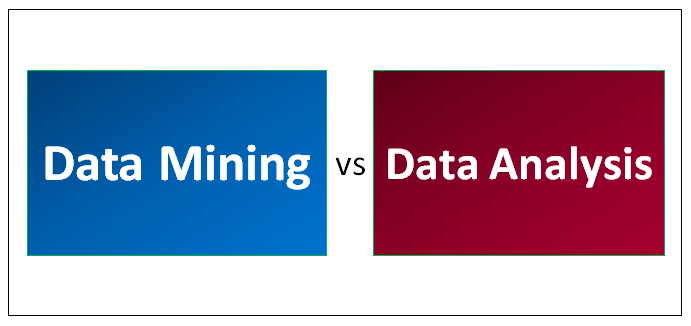Updated April 29, 2023
Difference Between Data Mining vs Data Analysis
The exponential increase in the volume of data has led to an information and knowledge revolution. It is now a fundamental research and strategy-building aspect to gather meaningful information and insights from existing data. All this information is stored in a data warehouse and used for Business Intelligence.
There are several definitions and views, but all would agree that Data Analysis and Data mining are two subsets of Business Intelligence.
- Data Mining – Data mining is a systematic and sequential process of identifying and discovering hidden patterns and information in a large dataset. It is also known as Knowledge Discovery in Databases. It has been a buzzword since the 1990s.
- Data Analysis – Data Analysis, on the other hand, is a superset of Data Mining that involves extracting, cleaning, transforming, modeling, and visualizing data to uncover meaningful and valuable information that can help derive conclusions and make decisions. Data Analysis as a process has been around since the 1960s.
Head-to-Head Comparison Between Data Mining vs Data Analysis
Below are the top 7 comparisons between Data Mining vs Data Analysis:
Key Differences Between Data Mining vs Data Analysis
Data Mining and Data Analysis are two distinct names and processes, yet there are some views where people use them interchangeably. This also depends on the organization or project team undertaking tasks where this distinction is not explicitly marked. To establish their unique identities, we are highlighting the significant difference between them as follows:
- Data mining identifies and discovers a hidden pattern in large datasets. Data Analysis gives insights or tests hypotheses or models from a dataset.
- Data mining is one of the activities in Data Analysis. Data Analysis is a complete set of activities that collects, prepares, and models data for extracting meaningful insights or knowledge. Both are sometimes included as a subset of Business Intelligence.
- Data Mining studies are primarily on structured data. Data Analysis can be done on structured, semi-structured, or unstructured data.
- Data Mining aims to make data more usable, while Data Analysis helps prove a hypothesis or make business decisions.
- Data Mining doesn’t need any preconceived hypothesis to identify the pattern or trend in the data. On the other hand, Data Analysis tests a given hypothesis.
- While Data mining is based on Mathematical and scientific methods to identify patterns or trends, Data Analysis uses business intelligence and analytics models.
- Data mining generally doesn’t involve visualization tools, Data Analysis is always accompanied by visualization of results.
Data Mining vs Data Analysis Comparison Table
Given below is the comparison table between Data Mining vs Data Analysis.
| Basis for Comparison | Data Mining | Data Analysis |
| Definition | It is the process of extracting a specific pattern from large datasets. | It is ordering and organizing raw data to determine useful insights and decisions. |
| Area of expertise | It involves the intersection of machine learning, statistics, and databases. | It requires knowledge of computer science, statistics, mathematics, subject knowledge, AI/Machine Learning. |
| Synonyms | It is also known as Knowledge discovery in databases. | Data Analysis has several types – exploratory, descriptive, text analytics, predictive analysis, data mining, etc. |
| Work Profile | Data Mining specialist usually builds algorithms to identify meaningful structure in the data. A data mining specialist is still a Data Analyst with extensive knowledge of inductive learning and hands-on coding. | A Data Analyst usually cannot be a single person. The job profile involves preparing raw data, cleansing, transformation, modeling, and presentation in chart/non-chart-based visualizations. |
| Responsibilities | It is responsible for extracting and discovering meaningful patterns and structures in the data. | Is responsible for developing models, explanations, testing, and proposing hypotheses using analytical methods. |
| Output | The output of a data mining task is a data pattern. | The output of Data Analysis is a verified hypothesis or insight into the data. |
| Examples | One of the significant applications of Data mining is in the E-Commerce sector, where websites display the option of “those who purchased this also viewed.” | An example of Data Analysis could be a “time-series study of unemployment during the last ten years.” |
Conclusion
Data Mining and Data Analysis have been around for around two decades (or more). Some user groups have used them interchangeably, while others have clearly distinguished between both activities. Data mining is usually a part of data analysis where the aim or intention remains discovering or identifying only the pattern from a dataset. Data Analysis, conversely, comes as a complete package for making sense of the data, which may or may not involve data mining. Both require different skill sets and expertise, and in the following years, both areas will see high demands both data, resources, and jobs.
Recommended Articles
This has been a guide to Data Mining vs Data Analysis. Here we have discussed Data Mining vs Data Analysis head-to-head comparison, key differences, infographics, and a comparison table. You may also look at the following articles to learn more –


